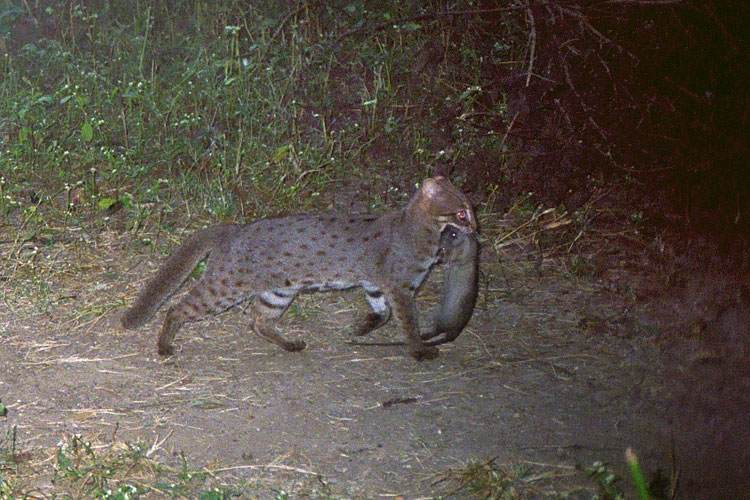The Pilibhit Territorial Forest Division forests are spread over an area of 700 sq. km. They are a part of the Terai Arc landscape that stretches for over 800 km between the Rivers Yamuna in the west and Baghmati in the east (click image at bottom). Pilibhit’s forests are strategically located in the landscape and connect India’s Dudhwa Tiger Reserve and Nepal’s Suklaphanta National Park through the Lagga Bagga forests. This forest division is in the process of being declared a Tiger Reserve.
WWF-India has been involved in the camera trapping exercise in different landscapes in India in 2010 for the estimation of tiger numbers in association with the Wildlife Institute of India (WII) and the National Tiger Conservation Authority (NTCA), as well as the state forest departments. During the tiger monitoring exercise in Pilibhit, WWF-india’s team of Meraj Anwar, Dr. Harish Kumar and Joseph Vattakavan conducted the camera trap study along with WII, between 22 May and 30 June, 2010
Apart from a healthy tiger population, including breeding females, the recent camera trapping exercise at Pilibhit has revealed some rare species of wildlife that have rarely been photo documented here earlier– the rusty spotted cat (Prionailurus rubiginosus) and chausingha (Tetracerus quadricornis).
The rusty spotted cat is the smallest member of the cat family. It is only found on the Indian Subcontinent and is closely related to fishing cat and leopard cat both of which are found in India. The coat of a rusty spotted cat is typically ruddy grey, with reddish or rust coloured small spots patterned with lines from the neck to tail that form solid stripes along the back of its head.
The main feature that distinguishes it from its closest cousin the leopard cat is its tail that averages about 50% of head to body length and is unmarked. Males of the species weigh about 1.5-1.6 kg, and females 1.1 kg. It is apparently nocturnal and in the wild is frequently observed on trees.
The known distribution of this cat is disjoint and it is mostly reported from the states of south and central India. It is also reported from the state of Gujarat, Rajasthan and individual records are from Jammu and Kashmir and Orissa. Rusty spotted cat was captured in camera trap during four different occasions at three camera stations in these forests. Study was carried out for 40 days from 22nd May to 30th June, 2010 at 30 camera stations. The trap stations where captures occurred were in a sal (Shorea robusta) dominated forest. Also fishing cat and jungle cat were clicked frequently. Rusty spotted cat is under vulnerable category C2a(i) of Red list of threatened species and protected under Schedule I of Wildlife (Protection) Act of India, 1972.
Chausingha is one of the smallest members of the bovidae family. It is also known as four-horned antelope and the males are recognized with the presence of a pair of horns each in the front and back over its head. This mammal prefers dry deciduous forested habitat and hilly terrain. This animal occurs only in India and Nepal and is endemic to the Indian peninsula and Indus divisions of the Indian Sub-region in the Asian Indo-Malayan Region. This species is most abundant in the central India. As it leads a secretive life style it is little studied. It is often confused with the muntjac and hog deer.



 CI is a non-profit, non-commercial portal that aims to facilitate wildlife and nature conservation by providing reliable information and the tools needed to campaign effectively.
CI is a non-profit, non-commercial portal that aims to facilitate wildlife and nature conservation by providing reliable information and the tools needed to campaign effectively.